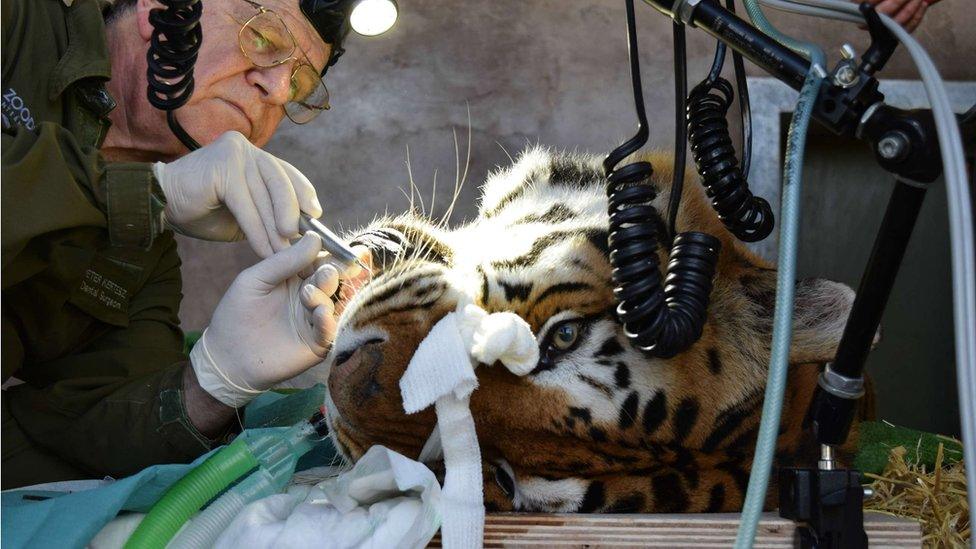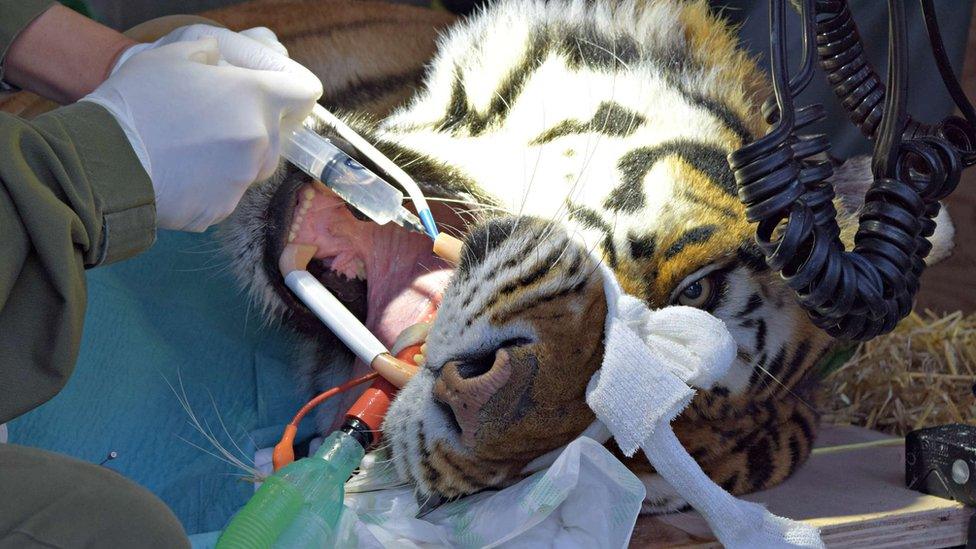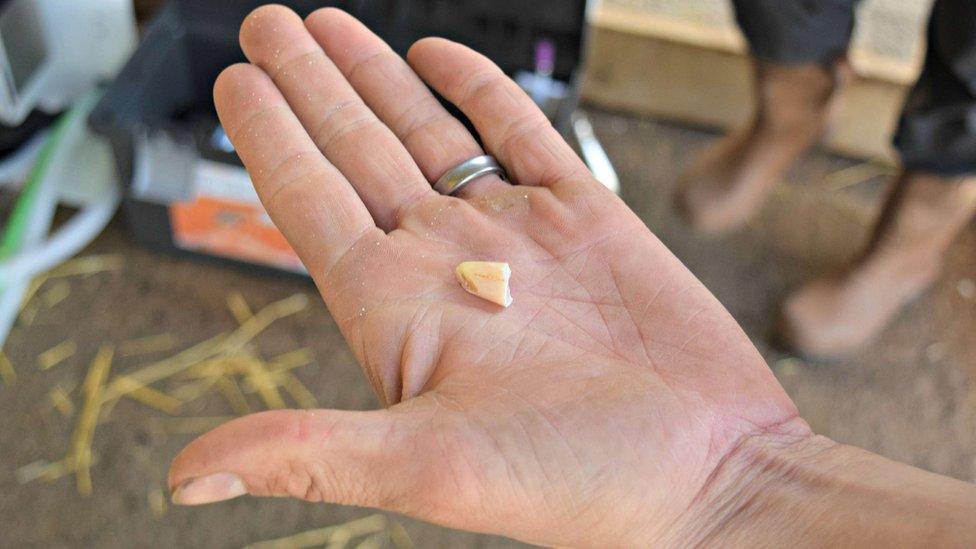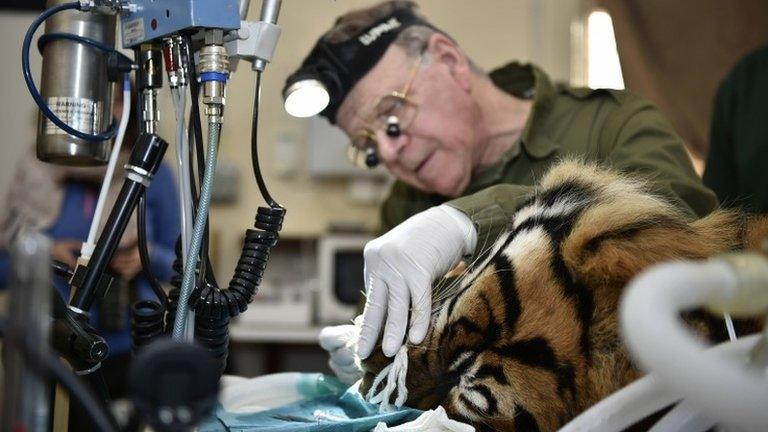Tiger toothache cured by Mayfair dentist at Somerset zoo
- Published

Keepers at Noah's Ark Zoo in Somerset noticed their large male tiger - Khan - was "a bit off" and spotted a chip in its five-inch-long canine tooth
A "grumpy" 31-stone (200kg) tiger with an infected tooth has been treated by a Mayfair dentist.
Keepers at Noah's Ark Zoo near Bristol noticed their large male tiger, Khan, was "a bit off" and spotted a chip in his five-inch-long (13cm) canine tooth.
Faced with the "dilemma" of dealing with a tiger with toothache, the zoo called in London surgeon and part-time zoo dentist Dr Peter Kertesz.
Following a 45-minute operation, the zoo said Kahn was "visibly happier".
The tiger has the "strongest bite force of any of the big cats", according to the animal park.

A carefully calculated dose of anaesthetic had to be administered to ensure the big cat did not wake up during surgery
To perform thee operation, staff had to administer a "carefully calculated dose of anaesthetic" and ensure the big cat's jaw was kept open.
"Khan was under general anaesthetic for about two hours," said Jon Woodward, from Noah's Ark.
"Too much anaesthetic would have resulted in death and too little would mean he would wake up - and you don't want that.
"We also had to keep the tiger's mouth open because if it had snapped shut, it would have taken an arm off."

The dentist praised the keepers for spotting the tiger's dental problem early
With the help of his dental nurse, Dr Kertesz was able to save the cracked tooth by removing the tip and filling the big cat's root canal.
"It was an important procedure, as infections like this can lead to more serious health issues if left untreated," he said.
"It was excellent observation on behalf of his keepers to spot the problem early."
- Published7 December 2014

- Published9 July 2010